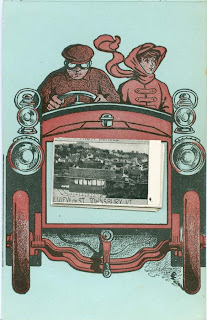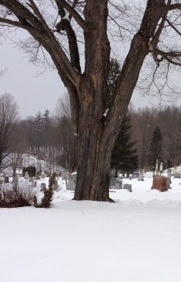Did you ever read
Tom Sawyer in the original version -- not condensed or modernized? How about
Huckleberry Finn? These are now mentioned often as prototype "young adult" novels, along with
To Kill a Mockingbird. And the reason they are classified in this way is simple: The characters in them are not yet grown up, and they experience a marked change in their lives: one often described as a loss of innocence.
I think it's important to notice that these labels and even this "loss of innocence" are relatively recent concepts. When I was a kid, the Mark Twain books were seen as accessible (if you were willing to work hard at reading them), but not sorted into "adult" and "young adult."
Life on the Mississippi and
A Connecticut Yankee in King Arthur's Court could be fit reading for anyone who could stick with the pages -- although clearly, you'd get more from Twain's bouts of satire if you were a more experienced reader.
Today's "young adult" (YA) category is generally recognized as especially the creation of librarians (as well as teachers) who wanted to offer worthwhile material for teens without pushing them into emotions they weren't yet ready to experience -- like the self-doubt that can result from reading sexually explicit material at too young an age, or the callous disregard for loss of life that marks some thrillers. YA material also has often involved recognizing the challenges most teens face: how to stay true to yourself in the face of peer pressure, how to avoid the cost of substance abuse, how to separate from parents without losing "home."
One of the books most recognized as an enduring YA novel is
A Wrinkle in Time by Madeleine L'Engle. It shaped some of my ideas about what it is to be a young woman, a scientist, and a brave person. I still keep a copy on my shelf. In her 1983 Newbery Award acceptance speech for this book, the author said:
Because of the very nature of the world as it is today our children receive in school a heavy load of scientific and analytic subjects, so it is in their reading for fun, for pleasure, that they must be guided into creativity.
She added, quoting from another author, that we help our children avoid a limited universe
"by providing them with 'explosive material capable of stirring up fresh life endlessly.'"
Even newer than the YA novel is the special genre of the YA mystery. A good one has to include the elements that make a mystery for "grownups" worth reading: a plot that makes sense, twists that are both surprising and believable, characters who risk something and who make choices that matter. And a good dash of suspense and tension! Plus for the YA area, the mystery also has to be what L'Engle called "explosive material." I can stand behind that statement firmly. "Explosive" in this way doesn't need to mean objectionable or even shocking -- but it must mean that the reader experiences a possibility of change and growth.
With those challenging aspects in mind, I'm glad to welcome two new YA mysteries to the shelf. One, by
Michelle Gagnon, is sci-fi crossover, in which a half dozen teens from various nations find themselves abruptly waking up in an emptied world where dinosaur-size monsters are hunting them. Published by Soho Crime, Gagnon's STRANGELETS compels the teens to share their pasts and wrestle with each other, to discover what has pushed them into this frightening situation -- and whether there is a chance to have their familiar world back again, ever. Criminal activity has indeed taken place. And courage is required. I like Gagnon's earlier thrillers very much, both the adult ones and the YA medical thrillers (
Don't Turn Around and
Don't Look Now). To me, STRANGELETS pushes the boundaries of the medical thriller, with plenty of intriguing science and tons of suspense. Seventeen-year-olds Sophie and Declan became part of my world while the book lasted. I do think this one is closer to sci-fi than to the traditional medical thriller, but ... it didn't bother me after the first few pages. Above all, Michelle Gagnon is a powerful storyteller and if she wants to call this one a thriller, well, I'll bend a bit.
The second is a firmly traditional mystery, in a less conventional setting: Jacquelyn Mitchard's WHAT WE SAW AT NIGHT. If the title evokes a hint of
The Curious Incident of the Dog in the Night-Time (Mark Haddon), I think that's no accident -- because in Mitchard's book as well as Haddon's, the people we care about are separated from the rest of "us" by conditions of difference that arrived with their genes. In Mitchard's book, Allie Kim and her best friends Rob and Juliet suffer from xeroderma pigmentosum, a "severe allergy to sunlight." (The scientist part of me insists on clarifying: The condition actually means that the
body cannot repair damage caused by ultraviolet light. But hey, if we can call alcoholism an allergy to alcohol, I guess the allergy motif works here, too.) The result of this shared disorder is that the three teens mostly emerge at night. Add their fascination with the discipline and daring of
parkour -- an extreme sport -- and Allie, Rob, and Juliet take to climbing tall buildings in the dark. Inevitably, they see something criminal. But they're up against a very crafty psychopath with the skills and knowledge to make the teens appear to be the guilty ones. Not only that: It looks like Juliet is being compelled to submit to abuse, with her friends as hostages.
Mitchard demonstrates that the ages of YA protagonists can actually increase the tension and risks of a thriller; the decisions that Allie Kim faces are indeed explosive, stirring up fresh importance of life. I'm glad there's clearly going to be a sequel!
So, let me wrap up this long-ish post by saying: If you have a favorite YA mystery or novel ... is there something about it that's explosive in this way? Share, if you feel so moved.

.JPG)










.JPG)

.JPG)

.JPG)












.JPG)





















